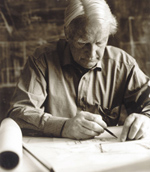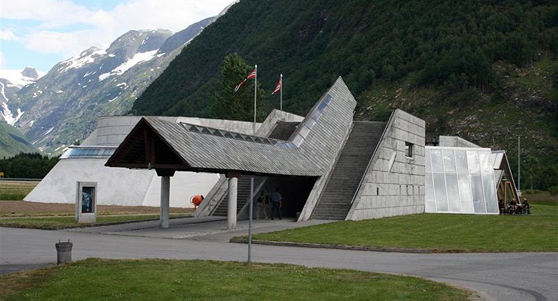
Sverre Fehn has died
 |
Fehn was born in 1924 in Kongsberg, Norway, and studied at the School of Architecture in Oslo. After completing his studies, he traveled to Morocco, where he was very impressed by primitive architecture. From this moment on, Fehn emphasized construction (considering light as one of the construction materials). After a two-year internship in Jean Prouvé's studio (during which he met Le Corbusier in Paris), he established his own studio in Norway.
His first international acclaim came from his pavilion at the EXPO world fair in Brussels in 1958. Among other important works by Sverre Fehn are the Norwegian pavilion at the Venice Biennale, the Schreiner and Bother houses in Oslo, Busk villa in Bamble, and museums in Hamar and Fjærland, Norway.
Since 1971, Fehn taught at the School of Architecture in Oslo and lectured at various universities around the world.
Sverre Fehn is a recipient of the Gold Medal of the Académie Française d'Architecture, the Heinrich Tessenow Award, and received the Pritzker Prize in 1997.
 |
| Glacier Museum, Fjærland (1989-1991) |
Oslo - World-famous Norwegian architect Sverre Fehn died at the age of 84 on Monday evening at a retirement home in Oslo. This was reported to the AP agency by his grandson Jacob Fehn. Fehn, who was born in 1924 in Kongsberg, studied architecture shortly after World War II and soon became a leading Norwegian architect recognized abroad as well.
His highest international architectural accolades came in 1997 when he was awarded the Pritzker Prize for Architecture and at the same time the Heinrich Tessenow Gold Medal. In 1993, he was awarded the Gold Medal of the French Academy of Architecture, and in 2001 he became the first recipient of the Grosch Medal.
Together with colleague Geir Grung, they achieved a breakthrough in their work in 1955 when they designed the modernist Ökern retirement home in Oslo. Three years later, Fehn and Grung, along with several other young architects and Arne Korsmo, founded PAGON (the Association of Progressive Architects in Oslo, Norway) and began to promote modern architecture.
At the age of 34, Fehn gained international recognition for the Norwegian pavilion at the World Expo in Brussels in 1958. In the 1960s, he created two of the most significant works of his career: the Nordic pavilion at the Venice Biennale and the Hedmark Museum in Hamar, Norway. Some consider this museum to be Fehn's greatest achievement. It marks his shift from pure modernism to a more personal architectural style.
Recently, Fehn designed several highly acclaimed museums in Norway: the Norwegian Glacier Museum (1991) in Fjærland, the Aukrust Center (1996) in Alvdal, the Ivar Aasen Center (2000) in Ørsta, and the Norwegian Museum of Photography (2001) in Horten.
Fehn also designed a number of remarkable private houses, including Busk villa, which was declared a national monument shortly after its completion in Bamble, Norway, in 1990. He was recognized for creating original exhibitions, such as the 1972 exhibition portraying medieval church art and the exhibition of Chinese warriors focusing on ancient terracotta figures.
Czech News Agency
The English translation is powered by AI tool. Switch to Czech to view the original text source.
0 comments
add comment











